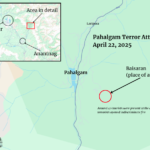The Dreaded Daily Commute
Picture this: You’re late for work, stuck in a sea of honking cars, watching the minutes tick by. The guy in the next lane is angrily sipping his coffee, and the motorcyclist weaving through traffic looks like he’s auditioning for an action movie.
Then, you hear about congestion pricing—a system designed to make traffic disappear by charging drivers to enter busy areas. Sounds like magic, right? Or is it just another way to squeeze more money out of hardworking commuters? Let’s break it down.
1. What Exactly Is Congestion Pricing?
At its core, congestion pricing is a simple yet controversial concept: Charge vehicles a fee to enter highly congested areas during peak hours. The goal? Reduce traffic, improve air quality, and encourage the use of public transport. Think of it like VIP access—but in reverse. Instead of paying extra for a premium experience, you’re paying to avoid sitting in traffic hell.
Cities like London, Singapore, and Stockholm have already implemented congestion pricing with surprising success. New York City is next in line, set to introduce its own version soon. But is it really as effective as city officials claim?
2. The Benefits: Why Some Say It’s Brilliant
- Less Traffic, More Sanity – Fewer cars on the road mean fewer headaches and less time wasted in bumper-to-bumper misery.
- Cleaner Air, Happier Lungs – With fewer emissions from idling vehicles, cities adopting congestion pricing have seen significant improvements in air quality.
- Better Public Transit – When driving gets expensive, public transportation becomes the go-to option. More riders = more funding for better trains and buses.
- Revenue for Infrastructure – The money collected doesn’t vanish into thin air. Cities use it to improve roads, bridges, and transit systems, creating a long-term solution for urban mobility.
Sounds pretty good, right? But before you get too excited, let’s talk about the flip side.
3. The Downsides: The Angry Driver’s Perspective
- A ‘Rich-Only’ City? – Critics argue that congestion pricing unfairly targets lower-income drivers who rely on their cars for work. Is this just a way to keep the wealthy cruising while pushing others out?
- Hidden Costs – Sure, fewer cars mean less traffic, but what about surge pricing for Ubers and delivery fees skyrocketing?
- The ‘Avoidance Game’ – Drivers will do anything to avoid paying extra, leading to more traffic on side streets and unintended congestion in surrounding neighborhoods.
For some, congestion pricing feels like being fined for simply existing. For others, it’s the best idea since GPS navigation. So, who’s really winning?
4. Winners vs. Losers: Who Gains the Most?
- Winners:
- Public Transit Riders – Less congestion means faster bus and train rides.
- Cyclists and Pedestrians – Fewer cars = safer roads.
- The Environment – Lower emissions and cleaner air.
- Local Governments – More revenue to spend on infrastructure.
- Losers:
- Daily Commuters Who Can’t Avoid Driving – Not everyone has a subway nearby.
- Businesses Relying on Deliveries – Higher fees could mean increased prices.
- People in ‘Avoidance Zones’ – Areas just outside congestion pricing zones may see more traffic as drivers reroute.
5. Is Congestion Pricing the Future or Just a Trend?
Love it or hate it, congestion pricing is gaining momentum. Cities across the globe are studying its effects, and with urban populations growing, we’re likely to see more of these systems in place. But the big question remains: Is it the right solution, or will cities find a better way to manage traffic without charging drivers extra?
One thing’s for sure: The next time you’re stuck in traffic, paying for a faster commute might not sound like the worst idea after all.
What’s Your Take?
Would you pay to avoid traffic, or do you think congestion pricing is an unfair burden? Drop your thoughts in the comments below and let’s get this debate rolling!
Table of Contents
Next Read -> The U.S. Army’s Transgender Ban: What It Means for the Future of Military Policies













